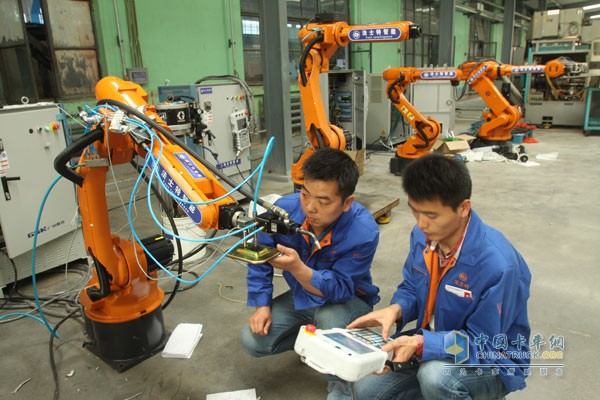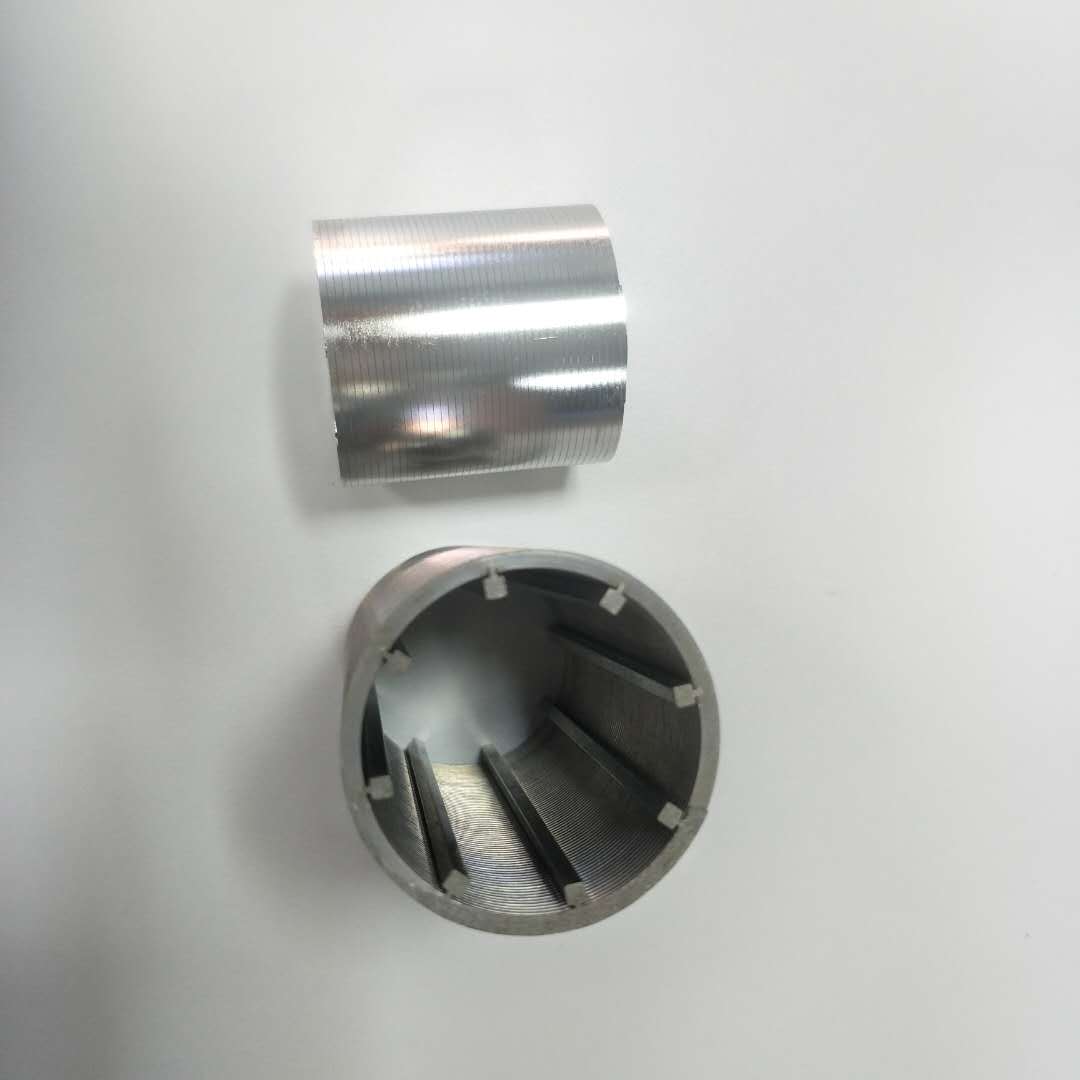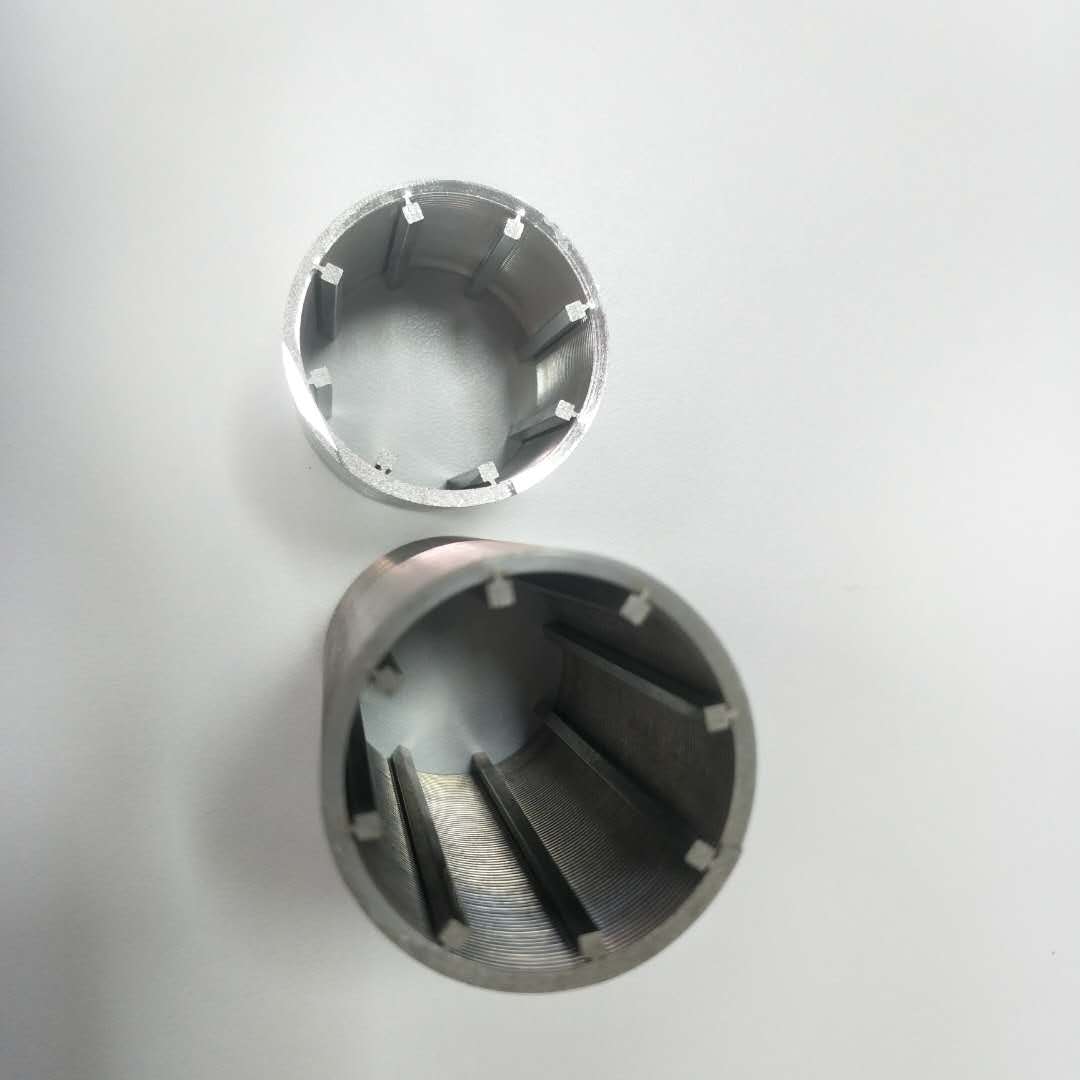“Made in China 2025†proposes to accelerate the innovation and development of the manufacturing industry, improve quality and efficiency, and realize the transition from a manufacturing country to a manufacturing powerhouse. At the same time, with rising labor costs and diversified market competition, the pressure on the manufacturing industry is increasing day by day. It is difficult to continue relying solely on traditional labor-intensive models. Shaanxi Fast Group Co., Ltd., a leading company in the transmission industry of commercial vehicles and an expert in transmission manufacturing, seized this strategic opportunity, rationally treated temporary difficulties in the current market downturn, looked to the long-term, persisted in innovation and development, and made smart manufacturing and automated production. The field began to show results and yielded considerable results.

Robot production line development site
Comply with the trend of precise layout to establish an automated production line development team
Fast has excellent machine tools, large quantities of parts and rules, and excellent automated operation advantages. Since 2014, in order to optimize equipment resources, improve product quality, and accelerate the pace of automated production, Fast has established an automated production line research team based on repeated demonstrations.
The young team with an average age of less than 31 years old, who was recruited by 10 elite soldiers, took charge of the R&D and implementation of the equipment production automation transformation project. Since the establishment of the team, they have worked hard to create a team atmosphere that is both hands-on and family-like with the teamwork spirit of unity and collaboration. In the actual work, everybody thinks in one heart, rushes to one place, surpasses oneself in the constant challenge, moves forward in constant exploration, and interprets “the whole person as one's heart and its profit and loss†to the extreme. They took care of food and clothing, and conscientiously and responsibly tackled one difficulty after another, creating one miracle after another, and Fast's automated production beats constantly set records.
Unfettered efforts to open up all aspects of the development process
Any success is not easy and easy. During the development of the automated production line, the development team experienced many difficulties and setbacks.
Before the establishment of the automated production line development team, the repair workshop of the project was mainly responsible for the overhaul of the company's equipment. It was originally unable to design and produce non-standard products. Under the new situation, this task was undertaken in a timely manner. In order not to affect production and project schedules, only downtime equipment can be used. This means that while carrying out research while repairing equipment, this not only increases the workload, but also increases the difficulty of the task. Secondly, due to the large differences between the manual and automatic production requirements for machine tools and tool holders, hand-held fixtures can be used manually. It may not be possible to use it stably at the time of automated operation. Fixtures and fixtures must be redesigned. In addition, the electrical control part of the machine tool must also be self-renovated to complete the system information exchange and transmit control signals; the most fluctuating one is the feeder for the fixed-point feeding of the robot. There have been three large trial-production conversions to suit the use. The working conditions of the station allow it to operate stably. In addition to this, although it cannot be described in detail, we will solve it as soon as problems arise. It may be precisely this indomitable spirit that our automatic production line will be successful in R&D.
Pay attention to details to overcome difficulties
details make a difference. In the entire development process, many details will encounter problems, but no matter how small the problems will affect the entire system, any small part may become a roadblock on the road to development.
In the development of automated robots for the production of seven-axis robots, the most important component is a six-meter moving rail. The length exceeds the processing capacity of the workshop's existing equipment. If the finished product is purchased, the price is far higher than expected. After a period of investigation and demonstration, the trial team decided to test the water robot to move the guide rail. This is a challenging task. The length of the guide rail is large and the overall length is welded. The structural profile itself has a large deformation. After the welding heat, the deformation is more difficult to control, but the final linear guide installation requires an accuracy of 0.1 mm. In the face of such equipment status and processing requirements, the project team standardized the guide rails and divided it into three parts. From the beginning of structural design, all aspects of welding, processing and assembly are closely monitored. After several weeks of hard work, the first rail with standardized and long-reaching connections was successfully installed on site. Immediately afterwards, the second and third articles were successfully completed in a short time. Throughout the development process, there are numerous obstacles such as this.
The first automated production line was successfully put into production
Based on a detailed understanding of the product processing flow and processing technology, R&D personnel gave full play to the teamwork spirit and devoted themselves wholeheartedly to the intense “fightingâ€. Everyone consulted the data, design drawings, processed parts, and problem-solving problems. They wouldn't be able to do it again. The design room and the development site left them busy.
Bao Jianfeng from the grinding out, plum blossom from the bitter cold. Finally, six months later, after in-depth discussion and learning of advanced external experience, the first production line wiring reconstruction program was determined, and the domestically-manufactured numerical control equipment was selected. The automatic loading and unloading of material feeding tables and fixtures were designed and manufactured, and the CNC machine tools were also The electromechanical transformation completed the information exchange and logistics design between the equipment of the production line. At present, the automatic line has been successfully put into production, enabling Fast to achieve a successful progress in the development of a single equipment production to an automated production line. It also marks a key step for Fast Manufacturing.
Steady progress has been fruitful and seven automated production lines have been used
Recently, another good news came. 6DS's one-axis automatic production line was successfully put into use. One production line completed all the processes such as part milling, roughing, finishing, boring, and marking. Only one employee was required for each shift. The upper and lower pallets and machine tools can be monitored. The production beats closely, the production process is smooth, and the processing efficiency is greatly improved.
After actual calculations, the labor intensity of workers was reduced by more than 50%, the processing efficiency of products was increased by 10%, the cost of employing personnel was reduced by 60%, the labor environment of workers was well improved, and the overall production organization was more standardized. Moreover, the production line operates stably and has reliable quality, which guarantees the improvement of product quality.
A intensive cultivation, in exchange for a year full of rice. Every sweat will eventually bloom as a happy smile. It is reported that up to now, seven fully automated production lines, including intermediate shafts, two shafts, sliding sleeves, and deceleration wheels, have been in service.
At present, Fast's unmanned, automated production line application adopts the "point, line, and face" promotion model, and it is firmly promoted and fully promoted. In the process of innovation and development, we have grasped the market opportunities and are ready to outperform our competitors and outperform the market with sophisticated automated production capabilities.
Cylindrical Johnson Screen is a wedge shaped wire welding filter element for solid-liquid separation. Cylindrical screen is a kind of Johnson screen and can be made into different shapes (Basket Shaped Johnson Screen, Nozzle Cap , Tubal Johnson Screen and Conical Johnson Screen and so on). Its filtration mode is filtering from the outside to the inside and filtering from the inside to the outside.

The minimum slot opening cylindrical Johnson screen is 25 um (0.001 inch) and the maximum slot opening cylindrical Johnson screen is 25 millimeter (1 inch).
The common material is 304, 321, 316 L, 904 L duplex stainless steel 2205, duplex stainless steel 2507, Monel alloy.etc.

It is widely used in many fields, such as petroleum refining and refining industry, water supply and sewage treatment, pulp and paper industry, mining and sand processing, construction industry, food filtration, nuclear power and so on.
Cylindrical Johnson Screen
Johnson Screens,Cylindrical Johnson Screen,Stainless Steel Cylindrical Johnson Screen,Stainless Steel Johnson Screen
Xinxiang Shengda Filtration Technique Co., Ltd. , https://www.shengdafiltration.com
